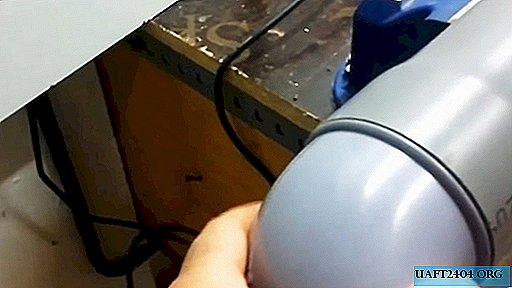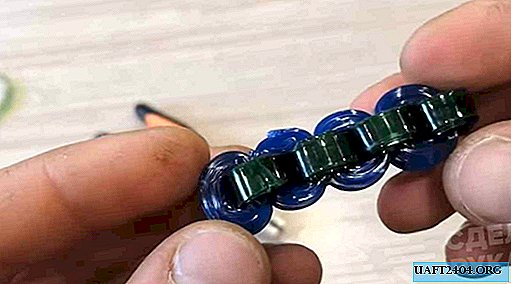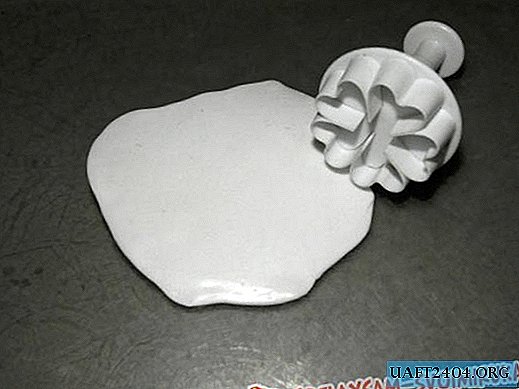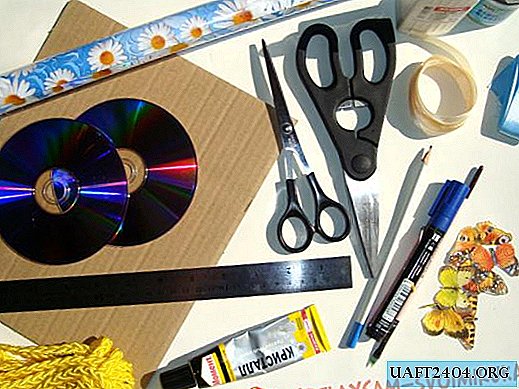Share
Pin
Tweet
Send
Share
Send
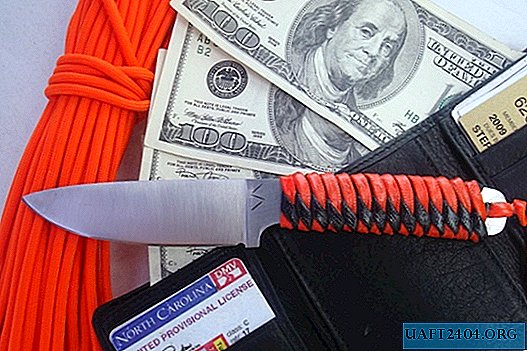
In the manufacture of handle knives, I usually use textolite or wood, but sometimes I resort to weaving.
When people think about braiding a handle, they usually represent a single-color cord wound in a circle. Boring!
Therefore, I decided to come up with a beautiful technique using cords of two colors. This is the second knife whose handle I decorated in this way. In the first case, I wove a black and fluorescent cord. I sat in front of the TV, holding a knife in one hand, and in the second I had black and luminescent cords. I started experimenting, and this is what I did.
I hope you will enjoy.
Instruments

You will need:
- ruler
- paracord (2 colors),
- lighter,
- multitool (you can use simple pliers, and something sharp to cut the cord).
Cut and gut


Cut the required length of the paracord of each color, I do it with a margin. Remember that it’s easier to cut off excess than to increase if you don’t grab it.
Go ahead and do not forget to remove the inner veins. To do this, make sure that they are not soldered to the outer shell, and pull them out.
Get ready for weaving

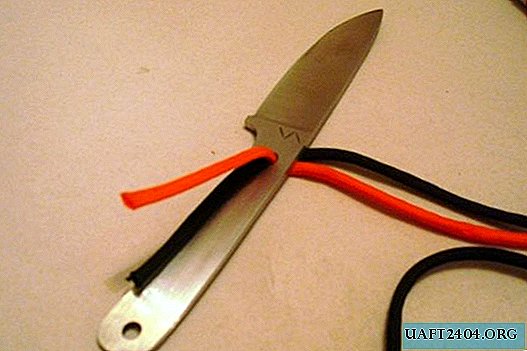


Wrap the cutting edge of the blade with electrical tape so as not to cut yourself.
Pass the cords into the hole where you start weaving, a couple of centimeters. Now you need to think. Whichever side you let the cords on, they will leave a protrusion on it, so I always leave it on the inside of the handle. The inner part is the place of the handle, where your fingers are attached to it, not the palm. If you do this, then the knife will be more convenient to lie in your hand.
In my opinion, this is the logic.
So, after you thread the ends of the cord into the upper hole, glue their ends to the metal of the handle. Then they will lie more evenly and will not interfere during weaving. Only fingers do not need to be glued.
Weaving







Do you know how the first knot is made when you lace up your shoes? We will use this node.
Throw the cords to the side where the glued ends are. Black should go under the orange, then throw it through the orange (just look at the photo and everything will become clear).
After that, turn the knife over to the other side and do the same actions now on it. The cord should be well tightened. Then turn the knife over again and repeat.
Entertainment

During weaving, I like to watch an interesting show. But do not forget to pay attention to what you are doing.
Ending



After weaving approaches the lower hole, one cord will be closer to it, the other a little to the side. In my case, black turned out to be closer. Pass the neighbor into the hole, and continue to twist the handle around the handle and thread it on the other side. Now tie a knot, and with the remnants of the cords you can do whatever you want. Usually I catch a cool bead and then knit a knot again. But I didn’t have anything at hand, so I just cut the edges a couple of centimeters below the knot.
Resin coating




Now you need to completely wrap the blade with tape and other parts on which the resin should not be. Of course, it can be removed from steel, but why waste time on it.
Mix a small amount of fiberglass resin. I used 30 ml, but half would have been enough for me. There was simply no smaller measuring cup at hand.
Take an inexpensive brush and gently apply the resin throughout the lacing. Let it soak if necessary, apply the resin again. Then hold the blade in a vise to dry the handle.
After a few minutes, remove the knife and turn it over, then the resin will not solidify with a drop on the side of the handle, which is directed down.
Original article in English
Share
Pin
Tweet
Send
Share
Send

